Intel 3rd Gen Xeon Scalable (Ice Lake SP) Review: Generationally Big, Competitively Small
by Andrei Frumusanu on April 6, 2021 11:00 AM EST- Posted in
- Servers
- CPUs
- Intel
- Xeon
- Enterprise
- Xeon Scalable
- Ice Lake-SP
SPECjbb MultiJVM - Java Performance
Moving on from SPECCPU, we shift over to SPECjbb2015. SPECjbb is a from ground-up developed benchmark that aims to cover both Java performance and server-like workloads, from the SPEC website:
“The SPECjbb2015 benchmark is based on the usage model of a worldwide supermarket company with an IT infrastructure that handles a mix of point-of-sale requests, online purchases, and data-mining operations. It exercises Java 7 and higher features, using the latest data formats (XML), communication using compression, and secure messaging.
Performance metrics are provided for both pure throughput and critical throughput under service-level agreements (SLAs), with response times ranging from 10 to 100 milliseconds.”
The important thing to note here is that the workload is of a transactional nature that mostly works on the data-plane, between different Java virtual machines, and thus threads.
We’re using the MultiJVM test method where as all the benchmark components, meaning controller, server and client virtual machines are running on the same physical machine.
The JVM runtime we’re using is OpenJDK 15 on both x86 and Arm platforms, although not exactly the same sub-version, but closest we could get:
EPYC & Xeon systems:
openjdk 15 2020-09-15
OpenJDK Runtime Environment (build 15+36-Ubuntu-1)
OpenJDK 64-Bit Server VM (build 15+36-Ubuntu-1, mixed mode, sharing)
Altra system:
openjdk 15.0.1 2020-10-20
OpenJDK Runtime Environment 20.9 (build 15.0.1+9)
OpenJDK 64-Bit Server VM 20.9 (build 15.0.1+9, mixed mode, sharing)
Furthermore, we’re configuring SPECjbb’s runtime settings with the following configurables:
SPEC_OPTS_C="-Dspecjbb.group.count=$GROUP_COUNT -Dspecjbb.txi.pergroup.count=$TI_JVM_COUNT -Dspecjbb.forkjoin.workers=N -Dspecjbb.forkjoin.workers.Tier1=N -Dspecjbb.forkjoin.workers.Tier2=1 -Dspecjbb.forkjoin.workers.Tier3=16"
Where N=160 for 2S Altra test runs, N=80 for 1S Altra test runs, N=112 for 2S Xeon 8280, N=56 for 1S Xeon 8280, and N=128 for 2S and 1S on the EPYC system. The 75F3 system had the worker count reduced to 64 and 32 for 2S/1S runs.
The Xeon 8380 was running at N=140 for 2S Xeon 8380 and N=70 for 1S - the benchmark had been erroring out at higher thread counts.
In terms of JVM options, we’re limiting ourselves to bare-bone options to keep things simple and straightforward:
EPYC & Altra systems:
JAVA_OPTS_C="-server -Xms2g -Xmx2g -Xmn1536m -XX:+UseParallelGC "
JAVA_OPTS_TI="-server -Xms2g -Xmx2g -Xmn1536m -XX:+UseParallelGC"
JAVA_OPTS_BE="-server -Xms48g -Xmx48g -Xmn42g -XX:+UseParallelGC -XX:+AlwaysPreTouch"
Xeon Cascade Lake systems:
JAVA_OPTS_C="-server -Xms2g -Xmx2g -Xmn1536m -XX:+UseParallelGC"
JAVA_OPTS_TI="-server -Xms2g -Xmx2g -Xmn1536m -XX:+UseParallelGC"
JAVA_OPTS_BE="-server -Xms172g -Xmx172g -Xmn156g -XX:+UseParallelGC -XX:+AlwaysPreTouch"
Xeon Ice Lake systems (SNC1):
JAVA_OPTS_C="-server -Xms2g -Xmx2g -Xmn1536m -XX:+UseParallelGC"
JAVA_OPTS_TI="-server -Xms2g -Xmx2g -Xmn1536m -XX:+UseParallelGC"
JAVA_OPTS_BE="-server -Xms192g -Xmx192g -Xmn168g -XX:+UseParallelGC -XX:+AlwaysPreTouch"
Xeon Ice Lake systems (SNC2):
JAVA_OPTS_C="-server -Xms2g -Xmx2g -Xmn1536m -XX:+UseParallelGC"
JAVA_OPTS_TI="-server -Xms2g -Xmx2g -Xmn1536m -XX:+UseParallelGC"
JAVA_OPTS_BE="-server -Xms96g -Xmx96g -Xmn84g -XX:+UseParallelGC -XX:+AlwaysPreTouch"
The reason the Xeon CLX system is running a larger back-end heap is because we’re running a single NUMA node per socket, while for the Altra and EPYC we’re running four NUMA nodes per socket for maximised throughput, meaning for the 2S figures we have 8 backends running for the Altra and EPYC and 2 for the Xeon, and naturally half of those numbers for the 1S benchmarks.
For the Ice Lake system, I ran both SNC1 (one NUMA node) as SNC2 (two nodes), with the corresponding scaling in the back-end memory allocation.
The back-ends and transaction injectors are affinitised to their local NUMA node with numactl –cpunodebind and –membind, while the controller is called with –interleave=all.
The max-jOPS and critical-jOPS result figures are defined as follows:
"The max-jOPS is the last successful injection rate before the first failing injection rate where the reattempt also fails. For example, if during the RT-curve phase the injection rate of 80000 passes, but the next injection rate of 90000 fails on two successive attempts, then the max-jOPS would be 80000."
"The overall critical-jOPS is computed by taking the geomean of the individual critical-jOPS computed at these five SLA points, namely:
• Critical-jOPSoverall = Geo-mean of (critical-jOPS@ 10ms, 25ms, 50ms, 75ms and 100ms response time SLAs)
During the RT curve building phase the Transaction Injector measures the 99th percentile response times at each step level for all the requests (see section 9) that are considered in the metrics computations. It then computes the Critical-jOPS for each of the above five SLA points using the following formula:
(first * nOver + last * nUnder) / (nOver + nUnder) "
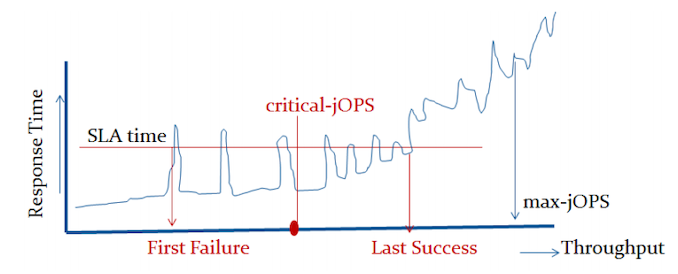
That’s a lot of technicalities to explain an admittedly complex benchmark, but the gist of it is that max-jOPS represents the maximum transaction throughput of a system until further requests fail, and critical-jOPS is an aggregate geomean transaction throughput within several levels of guaranteed response times, essentially different levels of quality of service.
Beyond the result figures, the benchmark keeps detailed track of timings of responses and tracks a few important statistical data-points across a response-time curve, as follows:
Comparing the Xeon 8380 to the Xeon 8280, what’s to be immediately noted is the much-improved maximum throughput figure of the new part, scaling at +64% compared to its predecessor. We’re seeing that the load slope where the 99th percentile SLA figures rises comes in at a relative earlier point, and the corresponding critical-jOPS point lands in relatively earlier than the Xeon 8280.
I included the AMD EPYC 7763 and Altra graphs for context.
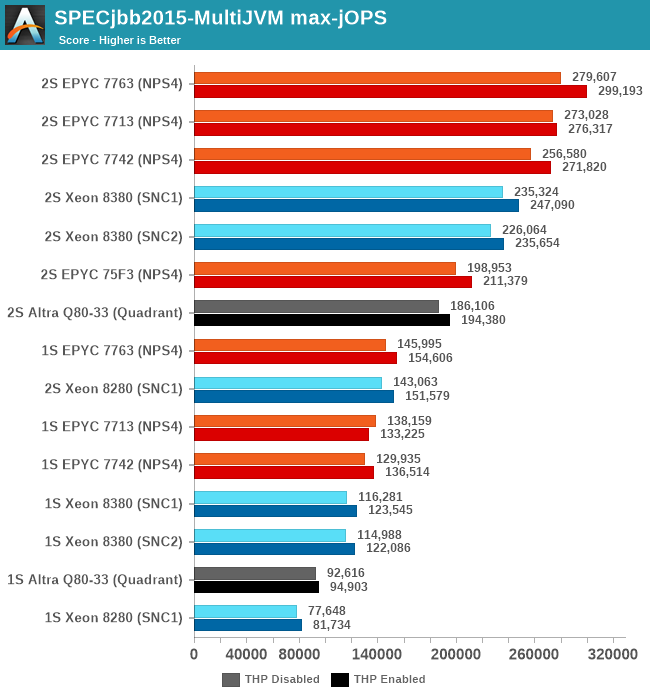
My theory here is that because of the good per-core performance of the Intel design, along with the monolithic mesh architecture, while Intel doesn’t quite catch up with AMD, it performs very well with relatively significantly fewer cores.
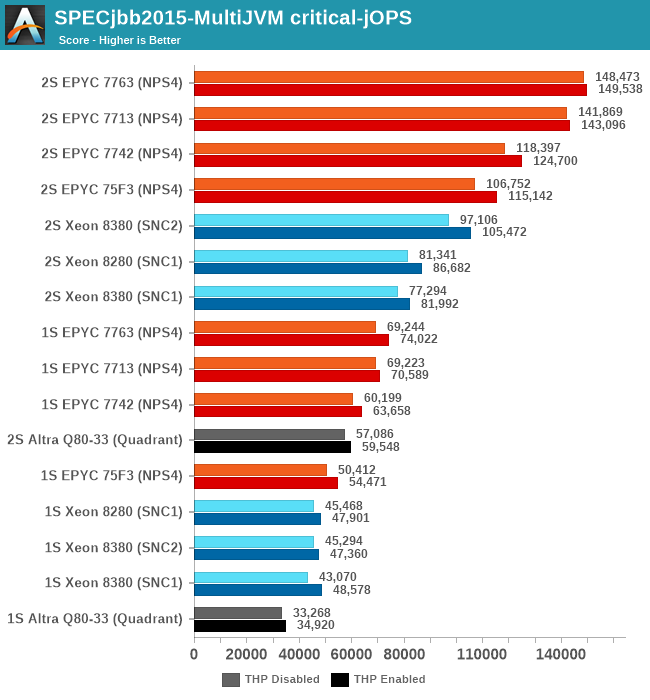
What’s really odd about the results though is that this larger increase only happens in the 2S test figures, with the 1S being unfavourable to the new Ice Lake part, losing to the 8280 in both modes. I had repeated these numbers several times to be sure they’re repeatable, and they were indeed so – as odd as that is. The 1S reduction in the critical-jOPS could be explained through the larger mesh size and larger core count of the 8380, and we did see slight regressions in core-to-core latencies. If the mesh intersection bandwidth did not increase with its size, that also could be a culprit of these figures, as the workload is hammering core-to-core transactions as well as the L3 cache of the chip.
Why the 2S figures see a bigger advantage of migrating to SNC2 could be a result of how on-chip traffic is routed, as well as the traffic flows through the UPI link blocks of the chip – at least that would be my working hypothesis.
Intel had disclosed a +62% figure for a “Java Throughput under SLA” workload they wouldn’t specify, and this does track well with our max-jOPS results. While the critical-jOPS increases seem a bit disappointing generationally, how it translates to the real world in contrast to the max-jOPS figure depends on how strict one’s SLA metrics are.


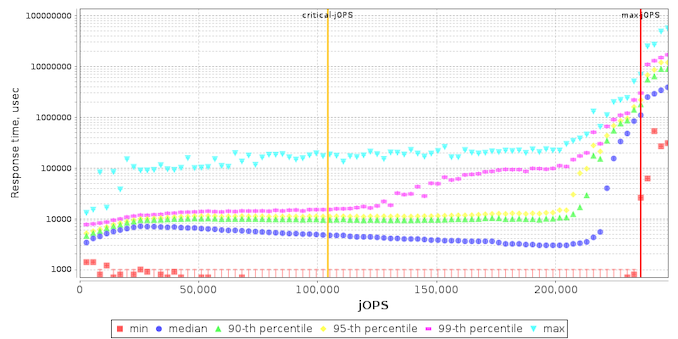
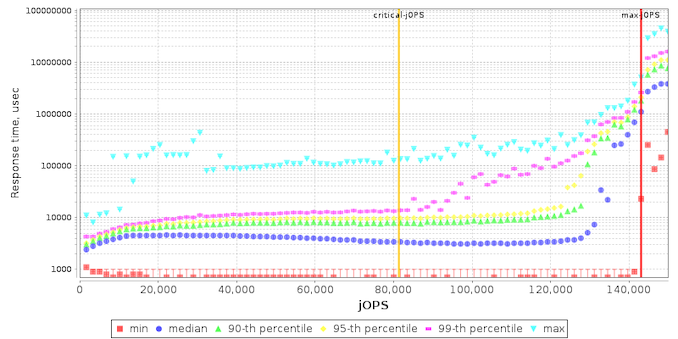
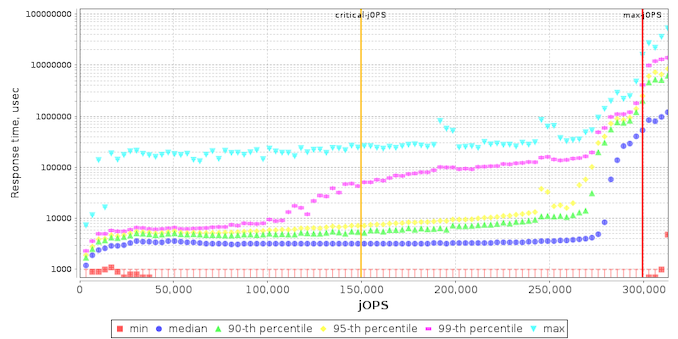
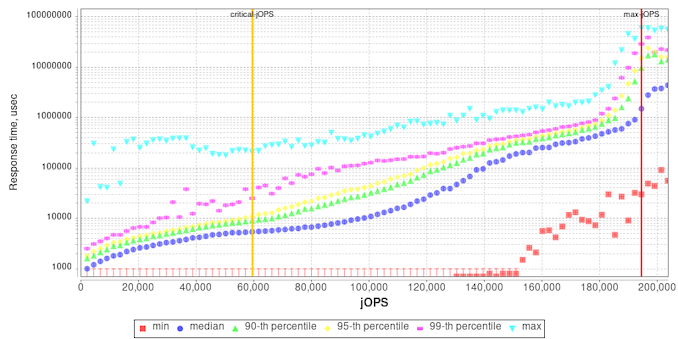








169 Comments
View All Comments
mode_13h - Thursday, April 8, 2021 - link
Please tell me you did this test with an ICC released only a couple years ago, or else I feel embarrassed for you polluting this discussion with such irrelevant facts.Oxford Guy - Sunday, April 11, 2021 - link
It wasn't that long ago.If you want to increase the signal to noise ratio you should post something substantive.
For instance, if you think think ICC no longer produces faster Blender builds why not post some evidence to that effect?
eastcoast_pete - Tuesday, April 6, 2021 - link
This Xeon generation exists primarily because Intel had to come through and deliver something in 10 nm, after announcing the heck out of it for years. As an actual processor, they are not bad as far as Xeons are concerned, but clearly inferior to AMD's current EPYC line, especially on price/performance. Plus, we and the world know that the real update is around the corner within a year: Sapphire Rapids. That one promises a lot of performance uplift, not the least by having PCI-5 and at least the option of directly linked HBM for RAM. Lastly, if Intel would have managed to make this line compatible with the older socket (it's not), one could at least have used these Ice Lake Xeons to update Cooper Lake systems via a CPU swap. As it stands, I don't quite see the value proposition, unless you're in an Intel shop and need capacity very badly right now.Limadanilo2022 - Tuesday, April 6, 2021 - link
Agreed. Both Ice Lake and Rocket lake are just placeholders to try to make something before the real improvement comes with Saphire rapids and Alder Make respectively... I'm one that says that AMD really needs the competition right now to not get sloppy and become "2017-2020 Intel". I want to see both competing hard in the next years aheaddrothgery - Wednesday, April 7, 2021 - link
Rocket Lake is a stopgap. Ice Lake (and Ice Lake SP) were just late; they would have been unquestioned market leaders if launched on time and even now mostly just run into problems when the competition is throwing way more cores at the problem.AdrianBc - Wednesday, April 7, 2021 - link
No, Ice Lake Server cores have a much lower clock frequency and a much smaller L3 cache than Epyc 7xx3, so they are much slower core per core than AMD Milan for any general purpose application, e.g. software compilation.The Ice Lake Server cores have a double number of floating-point multipliers that can be used by AVX-512 programs, so they are faster (despite their clock frequency deficit) for the applications that are limited by FP multiplication throughput or that can use other special AVX-512 features, e.g. the instructions useful for machine learning.
Oxford Guy - Wednesday, April 7, 2021 - link
'limited by FP multiplication throughput or that can use other special AVX-512 features, e.g. the instructions useful for machine learning.'How do they compare with Power?
How do they compare with GPUs? (I realize that a GPU is very good at a much more limited palette of work types versus a general-purpose CPU. However... how much overlap there is between a GPU and AVX-512 is something at least non-experts will wonder about.)
AdrianBc - Thursday, April 8, 2021 - link
The best GPUs from NVIDIA and AMD can provide between 3 and 4 times more performance per watt than the best Intel Xeons with AVX-512.However most GPUs are usable only in applications where low precision is appropriate, i.e. graphics and machine learning.
The few GPUs that can be used for applications that need higher precision (e.g. NVIDIA A100 or Radeon Instinct) are extremely expensive, much more than Xeons or Epycs, and individuals or small businesses have very little chances to be able to buy them.
mode_13h - Friday, April 9, 2021 - link
Please re-check the price list. The top-end A100 does sell for a bit more than the $8K list price of the top Xeon and EPYC, however MI100 seems to be pretty close. perf/$ is still wildly in favor of GPUs.Unfortunately, if you're only looking at the GPUs' ordinary compute specs, you're missing their real point of differentiation, which is their low-precision tensor performance. That's far beyond what the CPUs can dream of!
Trust there are good reasons why Intel scrapped Xeon Phi, after flogging it for 2 generations (plus a few prior unreleased iterations), and adopted a pure GPU approach to compute!
mode_13h - Thursday, April 8, 2021 - link
"woulda, coulda, shoulda"Ice Lake SP is not even competitive with Rome. So, they missed their market window by quite a lot!